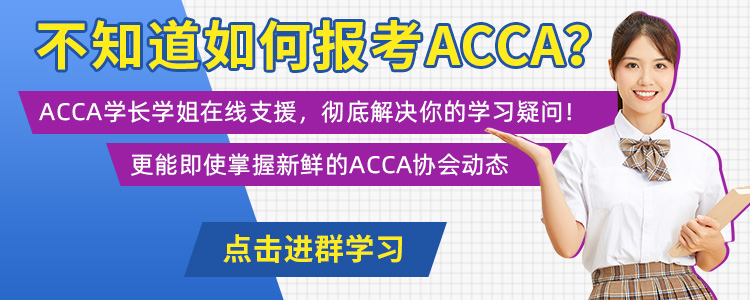摘要:The analysis of the changes of 2012 syllabus and examination
......
The analysis of the changes of 2012 syllabus and examination
----Relevant to Paper F1
The current syllabuses have been in place since they were relaunched in December 2007, They are planned to adapt and improve in accordance with the feedback from ACCA's key stakeholders to meet their continuous changing requirements. From June 2011, the syllabuses do not change a lot except for F1, F2, F3. Most of subjects only add some contents in the existing knowledge framework to meet the new demand of the market. We now analyse in detail the changes of syllabus and examination of Paper F1 in 2012.
* 2012 Syllabus changes
In general, the syllabus does not change significantly. The main changes are as follows:
New contents added:
Ø micro economic factors, including:
Micro-environments; the demand schedule;
* Example question: The demand curve for a product will shift to the left when there is:
A. A rise in household income;
B. An increasing desirability from the fashion point;
C. A fall in the price of a substitute;
D. A fall in the price of a complement;
(Answer: C. A rise in the price of substitutes will cause shift to the right; other 3 choices all cause the shift to the right).
the supply curve and factors affect the supply quantity;
*Example question: All of the following are likely to lead an outward shift in the supply curve for curve, except:
A. The introduction of cost-reducing technology;
B. An increase in the price of the good;
C. A decrease in the price of a resource used to make the good;
D. A decrease in taxes on producers
(Answer: B. The change in the price of the good can only caused the supply move alongside the supply curve rather than a shift.)
The equilibrium price
Example question:

Supply of and demand for good Q are initially in equilibrium as shown in the diagram, the government introduces a maximum price P. What effect will this have on the quantity of good Q purchased?
A. It will rise from G to E
B. It will rise from E to H
C. It will fall from H to G
D. It will fall from E to G
(Answer: D. The initial equilibrium quantity is E. Quantity demanded at the controlled price P will be H. However, only quantity G will be supplied and purchases will therefore be limited to this amount. Therefore, the quantity purchased will fall from E to G due to the shortage of supply available.)
Ø Competitive factors, such as:
Porter's five competitive forces
*Example question:
In Porter's five forces model, which of the following would not constitute a "barrier to entry"?
A. Scale economy available to existing competitors
B. High capital investment requirements
C. Low switching costs in the market
D. Loyalty to existing brands
(Answers: C. Low switching costs mean that the customer can easily change their suppliers. This constitutes low barriers to entry.)
Ø Competence frameworks, such as:
Characteristics and approach of coaching, mentoring and counselling
Ø ethical conflicts and dilemmas, such as:
Definition of ethical dilemmas; Situations where ethical dilemmas and conflict of interest occur; Resolution of ethical conflicts
*Example question: Which of the following would not represent an ethical objective in relation to employment practices?
A. Guarantee of minimum wages
B. Proactive health, safety and welfare promotion
C. Promotion of workforce diversity
D. Employability training
(Answer: A, minimum wages would not represent an ethical objective-because it is already a legal obligation! The other objectives reflect policy over and above statutory minimum standards.)
Candidates should expect at least one question to be tested for each of the contents added.
Deletion:
Ø History and role of accounting in business
Ø Define communications
* 2012 Examination changes
Before December 2011, F1 exams were based on objective and multiple choice questions. After December 2011, the form of the examination of F1 will change a lot. Under the new syllabus the exam is divided into two parts. Section A contains 16 one-mark objective test questions and 30 two-mark short objective test questions. Section B contains 6 four-mark longer version objective test questions, one taken from each of the six sections of the syllabus. Both CBE and paper based exams will use this form.
For example:
Section B four-mark question,
Accounting bodies set out a code of ethics to establish ethical behaviour requirements for professional accountants.
(a) The following are qualities you might see in a professional at work:
Integrity Honesty
A B
Trustworthiness Expertise
C D
Professional Confidentiality
Behaviour
E F
Respectfulness Objectivity
G H
Required:
Write down which of the FOUR boxes from (A-H) contain fundamental principles of ethical behaviour from the IFAC and ACCA codes of ethics. (2 marks)
(b) The following are desirable characteristics of professions and vocations:
A Acting in the public interest
B Highly skilled
C Ethical codes of conduct
D Governance by association
E Highly valued services
F Training requirement
G Process of certification
H Qualification by examination
Required:
Select FOUR of the characteristics from the list above, which distinguish a profession from an occupation. (2 marks)
(4 marks)
In accordance with 2011 Dec examiner's reports and technical articles, candidates should pay much more attention to their application skills because there are around 11 scene topics of 50 questions in 2011 Dec exam. So the candidates should train application capabilities.
After all, the main idea of this article is about 2012 new syllabus and examination changes and providing some example questions. Candidates should get well prepared.
——高顿研究中心 Lisa Shen





